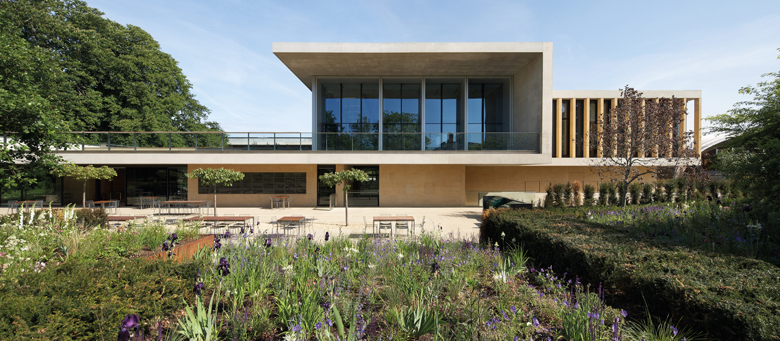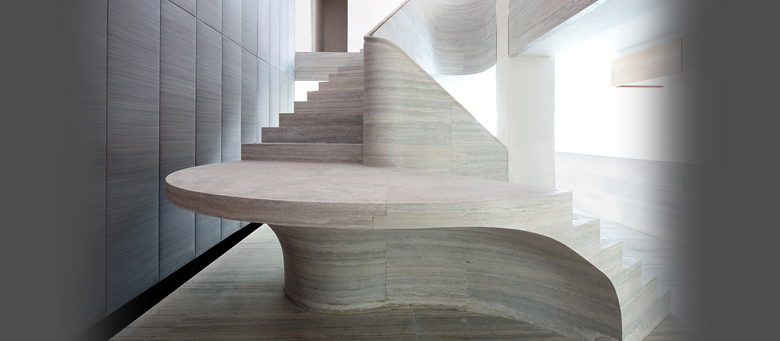New Altro CantataTM, the company’s first adhesive-free flooring for areas with a low slip risk, is already demonstrating its capabilities at Warrington Hospital, providing a tough time and cost saving solution in a busy non-clinical corridor.
Lee Bushell, the hospital’s Acting Head of Capital Projects, says “The service corridor is an area that gets an enormous amount of traffic. It’s in constant use during the day.
“After many years of this treatment, the existing vinyl flooring was really showing the strain. It looked tired, scruffy and we needed to find a hard wearing, affordable long term solution that could be laid with minimal disruption in this busy area.
“We have a very good relationship with Altro, and their flooring is proving very successful elsewhere in the hospital, so we asked them to have a look at the corridor and give us some guidance.
“They suggested we use their new Altro Cantata flooring, because it could be laid straight down onto the existing flooring, without adhesive, which would mean a fast installation.
New Altro Cantata is a decorative, adhesive-free flooring that creates maximum impact with minimum downtime. Using Altro’s award-winning adhesive-free installation method, it can be welded and walked on the same day, and at the end of its life removed easily, allowing it to be reused or recycled. It can handle the traffic of busy areas and is a long-term solution that will look good for years to come.
It is ideal for busy public spaces where disruption needs to be minimal, such as hospitals, schools and general circulation areas, with the durability needed for medium to high traffic areas. Plus there are no associated adhesive odours. Altro Cantata’s 16 soft-look shades, which range from subtle naturals to beautifully vivid, allows you to create just the right colour scheme or tone.
Lee Bushell continues: “I must admit I was sceptical that Altro Cantata would be able to meet our needs, but I am very pleased that I have been proved wrong, and it has been perfect for us in so many ways.
“There was a very short window for installation, because the corridor is in use until 7pm, but the process went very smoothly and was completed in just one night. A flooring that needs adhesive would have taken 3 to 4 days to fit. Altro Cantata has delivered a massive saving in cost, and the corridor was back in full use the next morning.
When speaking of the floor handling foot and wheeled traffic, Lee said: “It’s is standing up to the demands well with no signs of movement, bubbling or rippling, which proves it truly is a long term solution and not just a temporary fix. Very impressive.
“In terms of aesthetics, the flooring looks superb. There are some great colour choices with Altro Cantata. We selected a pale ice blue, which perfectly matches the colour scheme of the corridor.
“Cleaning is proving to be a revelation. The black scuffs and wheel marks from the trolleys were always tough to remove on the old flooring. Initially our cleaning team was doubtful they could get the marks off the new flooring, and nervous of using the scrubber and buffer because they thought they might do some damage.
“But we are delighted to report that the flooring comes up like new after every nightly cleaning regime, and even the stubborn black wheel marks are gone. Scrubbing machines and buffers are doing a wonderful job, with no damage.
“Sustainability is also an important factor for us. Because Altro Cantata is an adhesive-free flooring it means that in the future, if we need to make repairs, we can simply cut out a section and replace it, without having to re-lay the entire area. And the product is 100% recyclable as well.
“Overall, Altro Cantata is meeting all our needs in terms of cost saving, durability, looks and hygiene. This is vital at a time when the NHS is looking to make savings where possible, while also maintaining the highest standards.
“We are currently looking at using this product in another non-clinical area of the hospital, where there are similar issues with installation time. We think it will do a fantastic job there as well.”
Altro Cantata was installed at Warrington Hospital by Cheshire Contract Flooring Ltd. Director Dave Hunt says: “We specialise in installing flooring in healthcare environments, so we completely understand the pressures in terms of timing, cost and often sensitive environments.
“The beauty of Altro Cantata is that it can be laid straight down on to the subfloor, or existing flooring, with minimal preparation. There is no need to grind the floor, or put down a DPM, or prime, screed or use adhesive. This is a massive time and cost saver, a real fast track solution. Plus there is no need to wait for adhesive to dry and cure, so the flooring can be used and walked on immediately. It’s an ideal product for busy areas with heavy traffic where quick installation is paramount.”
Dave Hunt adds: “We laid the flooring in just one night, an area of 140m2, with two operatives. The process was quite straightforward. Firstly we made sure the existing flooring was clean, dry and dust free, then rolled out the sheet of product and cut it to size. Double-sided tape was then put around the perimeter, along the walls, one either side of the join.
“The tape was then peeled back and the flooring laid down and pressed into place. We finished by hot welding the joints, putting in a sit-on skirting, and steel threshold strips in the doorway. It was so fast: we could not have completed the work in this short timeframe with a traditional vinyl flooring.
“The work was carried on a very cold night in November, and we were afraid that the low temperature might cause the product to be brittle and buckle. But it settled very well, and we are delighted with how easy it was to work with and install. It looks great too.
“I was unsure that the flooring would stay in place with all the heavy trolleys turning on it every day, but it has been designed to do just that, and hasn’t moved or buckled in the slightest. We are very impressed with Altro Cantata and we’ll certainly be recommending it for our future projects.”







